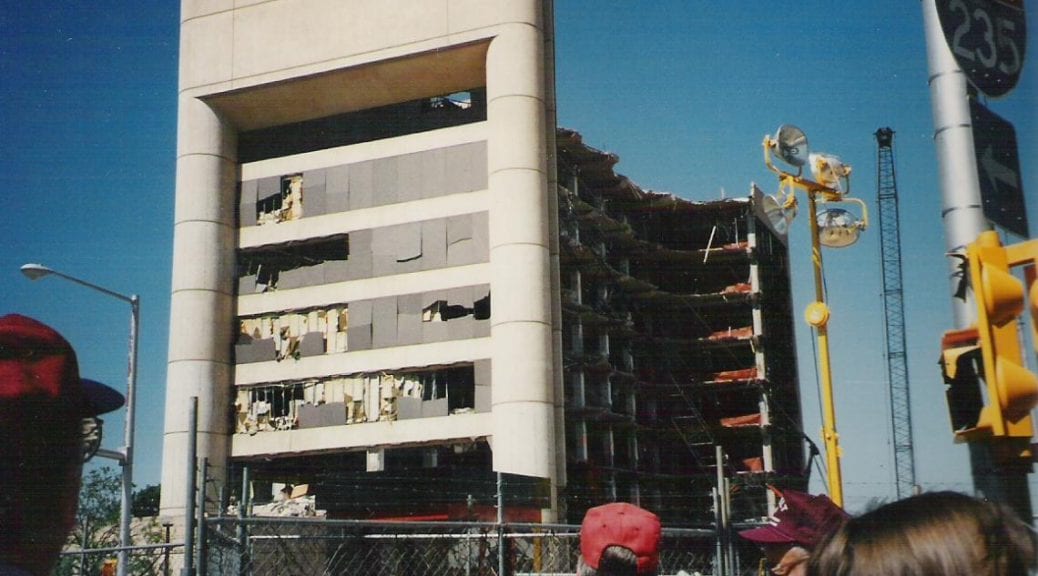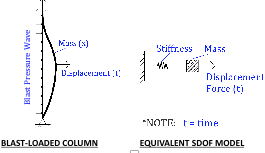Spencer Quiel is an Assistant Professor in the Department of Civil and Environmental Engineering at Lehigh University. His research focuses on resistance to extreme loads.
In recent years, blast hazards due to acts terrorism have resulted in significant damage to several structures, including the Murrah Federal Building in Oklahoma City in 1995 and the Khobar Towers in 1996. Accidental blasts, such as a 2011 gas utility explosion in Allentown, PA, have also caused significant damage to neighboring buildings and other infrastructure. Though relatively infrequent, blast hazards can cause extensive amounts of property damage and, more importantly, loss of human life. The design of structures to resist the effects of blast due to an explosive detonation is performed using a variety of analysis tools to simulate dynamic structural response to a blast-induced shock wave. The most common method in the current state-of-practice is the Single-Degree-of-Freedom (SDOF) method, which has also been used to model structural response to other dynamic loading such as earthquake-induced vibration. An SDOF system is a mathematical model in which a structural element is collectively represented as a single mass, spring, and damper to which a force time history is applied. A representative SDOF model for a blast-loaded column is shown below.
For blast threats at large standoff distances, previous experimental and computational studies have shown that the static bending shape assumption used by SDOF analysis is reasonable. However, experimental data and advanced analysis tools have shown that the SDOF method has difficulty in accurately capturing blast effects that are close range but not close enough to cause breach (or “punching”) damage. These “intermediate” range blast threats constitute a significant portion of the design-basis threats that are considered in current practice, and therefore the applicability of SDOF analysis for these cases is of great interest to the industry.
For the past three years, I participated in a collaborative project with practicing engineers at Hinman Consulting Engineers, Inc. to examine the assumed elastic deflected shape of the SDOF solution as another source of potential error between SDOF analyses and experimental or computational results for intermediate range threats. Prior to coming to Lehigh, the PI was a staff member at Hinman and has four years of experience in the implementation, research, and development of various calculation techniques for the analysis of structures subjected to blast loads. Hinman is a recognized leader in the protective design of structures, and its staff has significant expertise in the use of both simple and sophisticated methods for calculating the response of structures to blast.
A preliminary study on this topic by a Hinman staff member indicated that the accuracy of SDOF models of structural elements subjected to blast may be affected by several parameters, including the explosive threat characteristics and the mass of the element. In collaboration with Hinman’s staff, the PI is currently pursuing a computational study based at Lehigh to examine the influence and recommended use of these parameters. Evan Mullen, who earned a Master of Science in Lehigh’s CEE department as a Presidential Scholar under the supervision of the PI in January 2016, led this study for 15 months while working on his thesis. His work contributed directly to one of the PI’s primary research goals, which is to develop a multi-year program for the development of improved analysis tools for blast resistant structural design.
Awarded funds from Lehigh’s Faculty Research Grant (FRG) program were used to provide Evan’s stipend for the 3 months of Summer 2015. While supported by FRG funds, Evan developed a paper and presentation that was accepted to the 16th International Symposium for the Interaction of Munitions with Structures (http://reg.conferences.dce.ufl.edu/ISIEMS) in November 2015 in Destin, FL. Evan’s activities provided significant seed research that the PI will use to develop multi-year funding proposals to major agencies. This work has also helped further develop an already fruitful collaboration with Hinman’s staff.
SDOF analysis is widely used by practicing engineers for the protective design of structures, and the outcome of this project has the potential to significantly impact its use by identifying its limitations.

